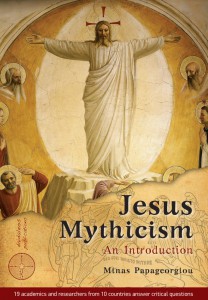An unexplained or unjustified phrase that I encounter with depressing regularity in works of Biblical scholars is “so and so’s argument does not convince” or “is not persuasive” — and the various equivalents of these, of course. This blot is too often found even in what can be the most informative of academic works. Of course I don’t have a problem with someone not being persuaded by an argument but I expect from scholars an evidence or logically based rationale to justify their reaction to a colleague’s assertions, conclusions or arguments. The unfortunate guilty piece of writing that has most recently crossed my path is an aspiring scholar’s blog review of Dennis MacDonald’s The Homeric Epics and the Gospel of Mark. This post’s criticism is not targeted at the author but at the all-too-common practice found throughout the literature of his field.
Dennis MacDonald’s controversial thesis is that the Greek epic poems of Homer, well known among both the literate and non-literate populations of the Greek speaking Hellenistic and Roman worlds, can explain many of the narrative details in the Gospel of Mark. (If you are unfamiliar with the idea and are interested in an overview I have posted details at The Gospel of Mark & Homer’s Epics on vridar.info.)
The blog review in this instance, as many other reviews have done, outlines MacDonald’s list of six criteria that he uses hopefully to establish whether a literary passage has been shaped in some way by the author’s awareness of a completely different work. (In a more recent work MacDonald has since added a seventh criterion, “ancient and Byzantine recognitions”.) So far so good, but when it comes to the details we slip in the mud. Continue reading “But WHY Does It Not Convince?”




